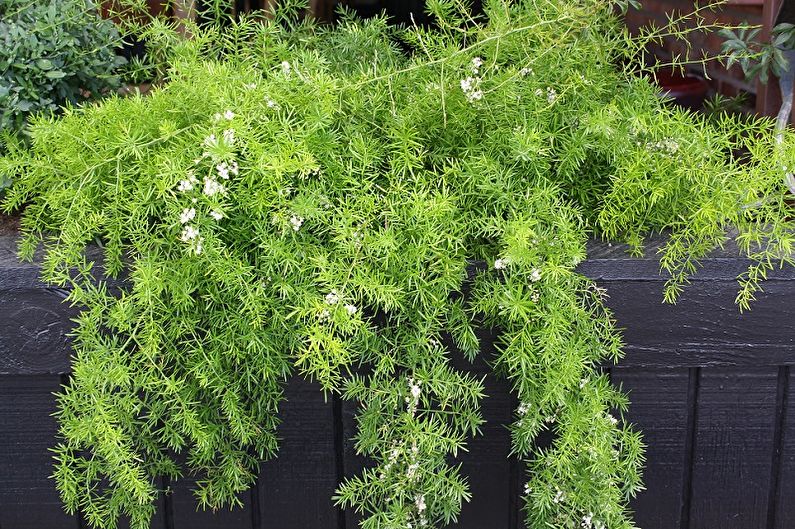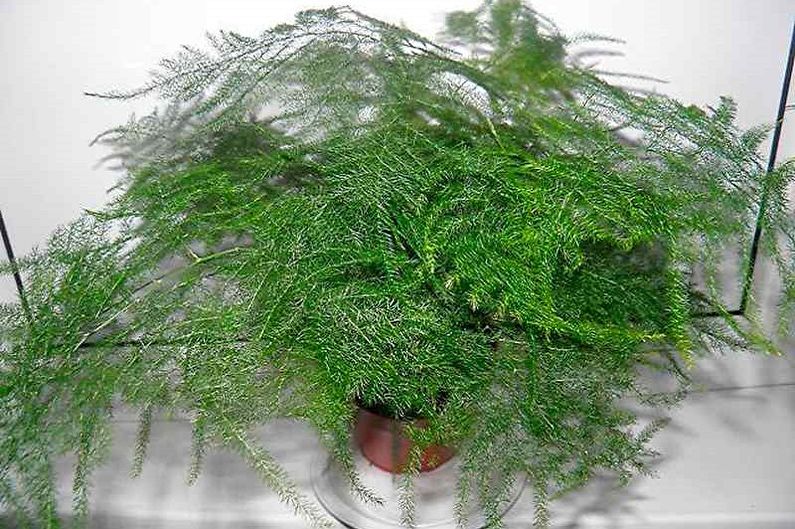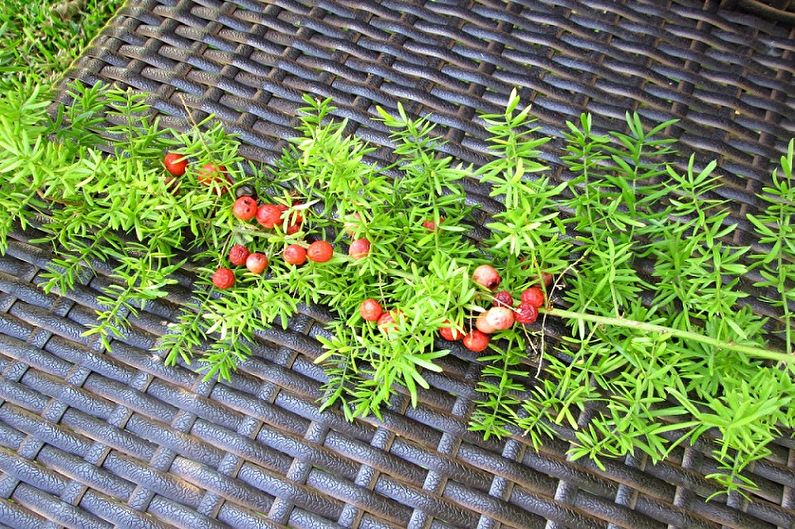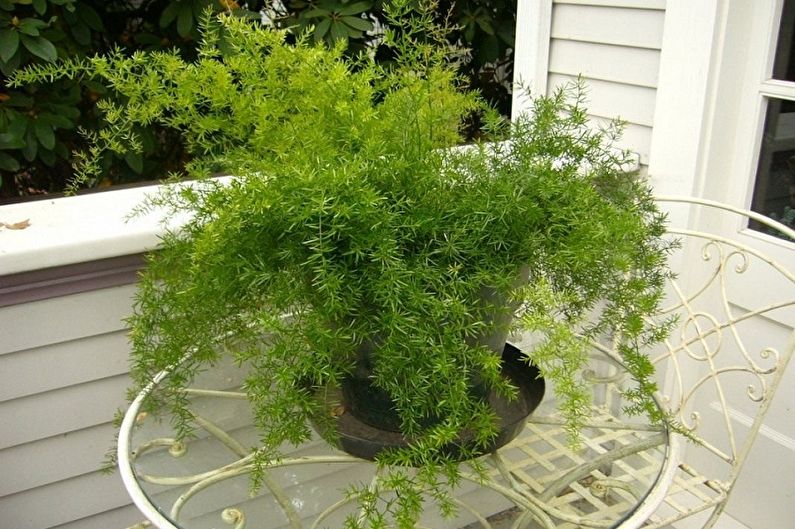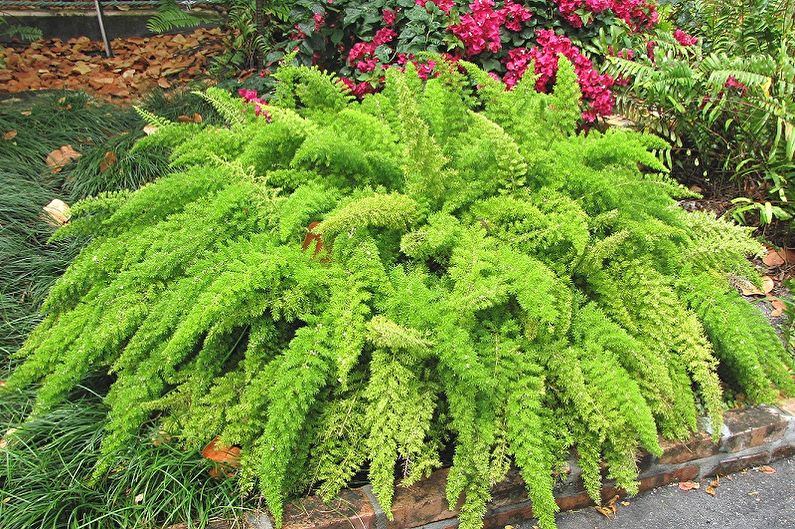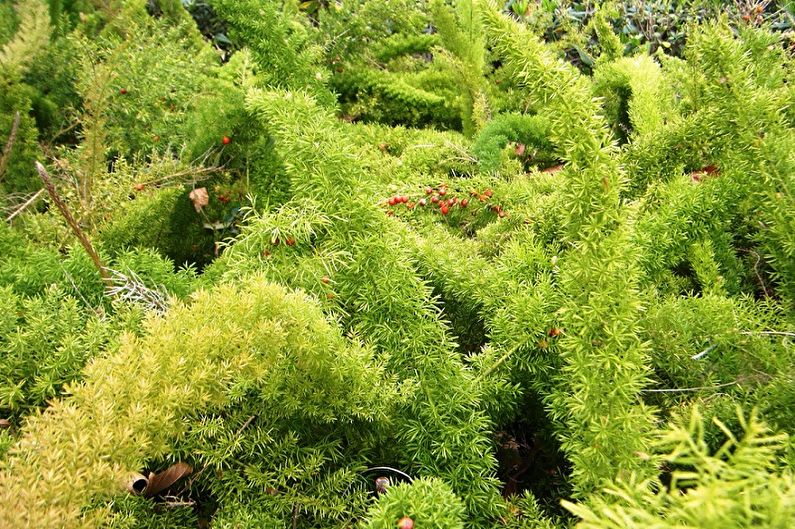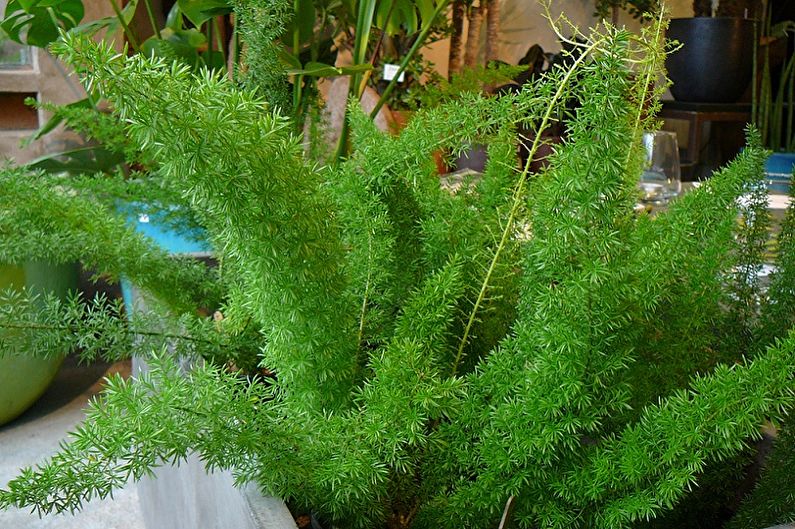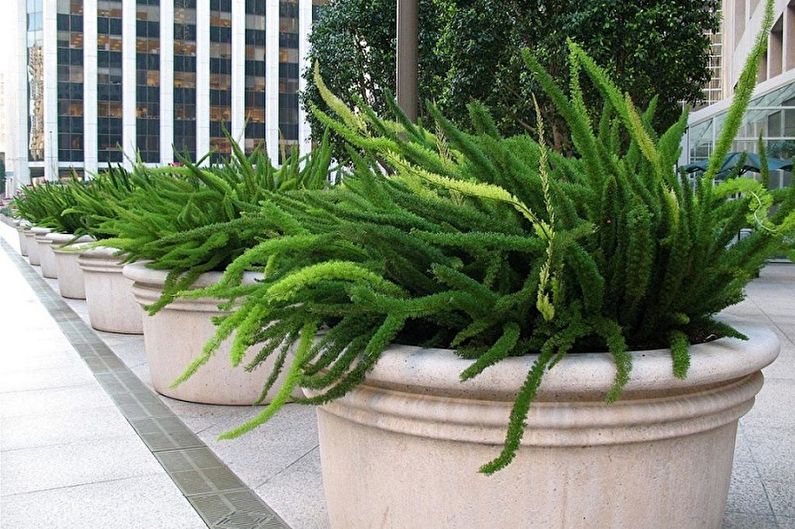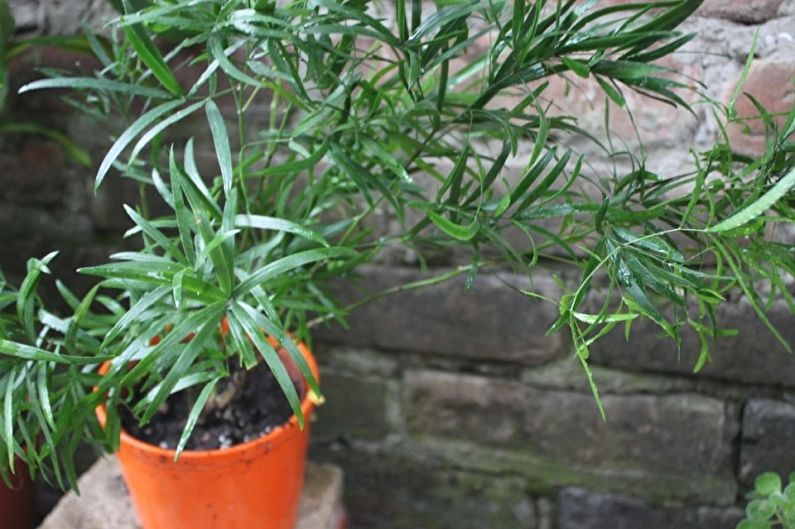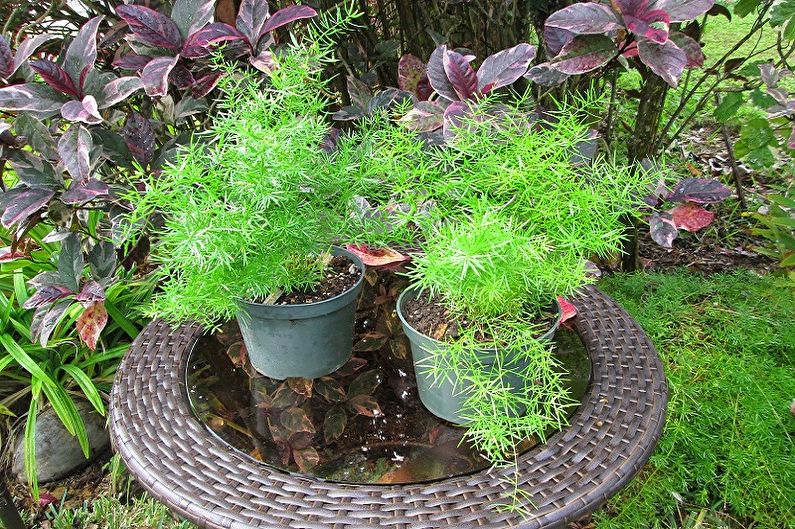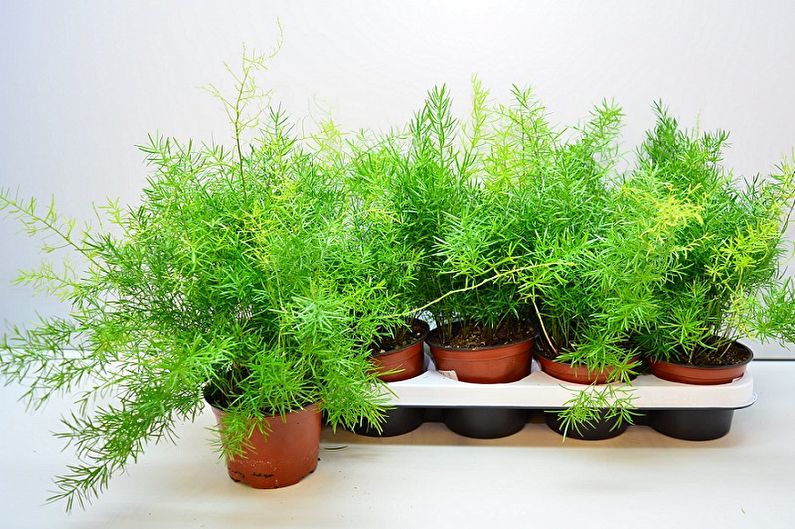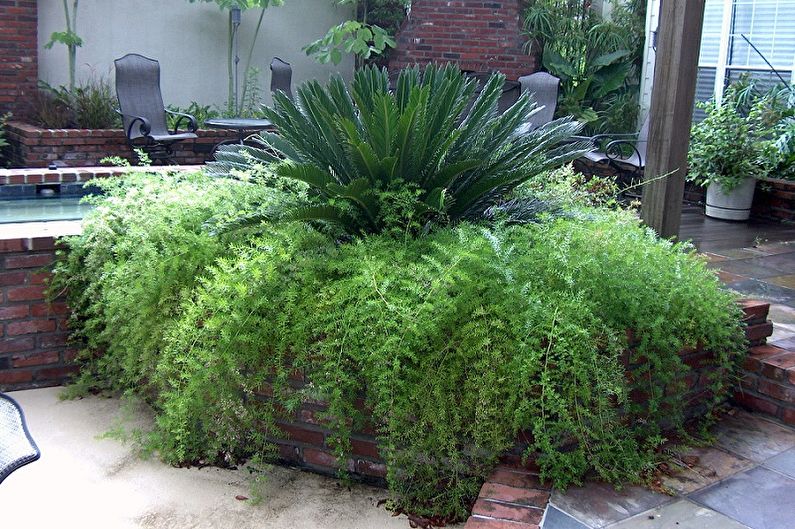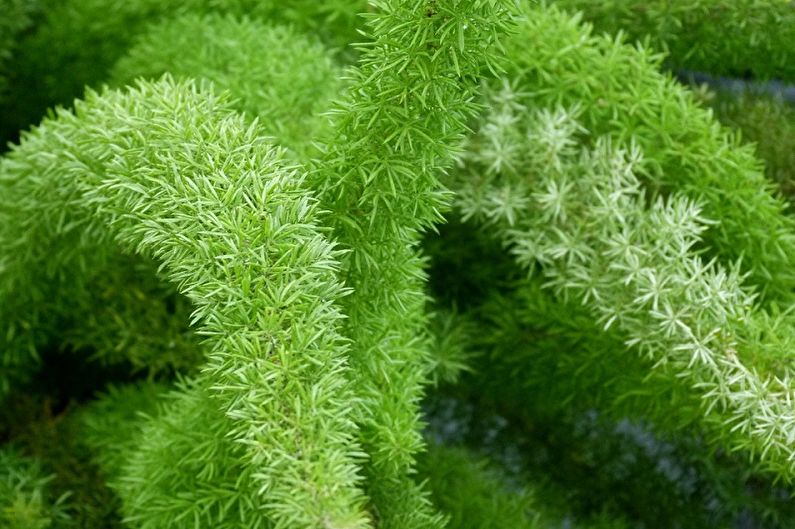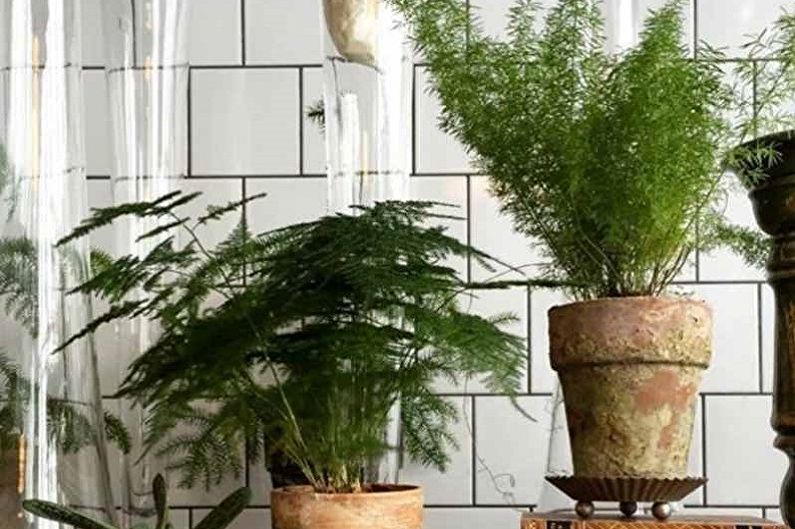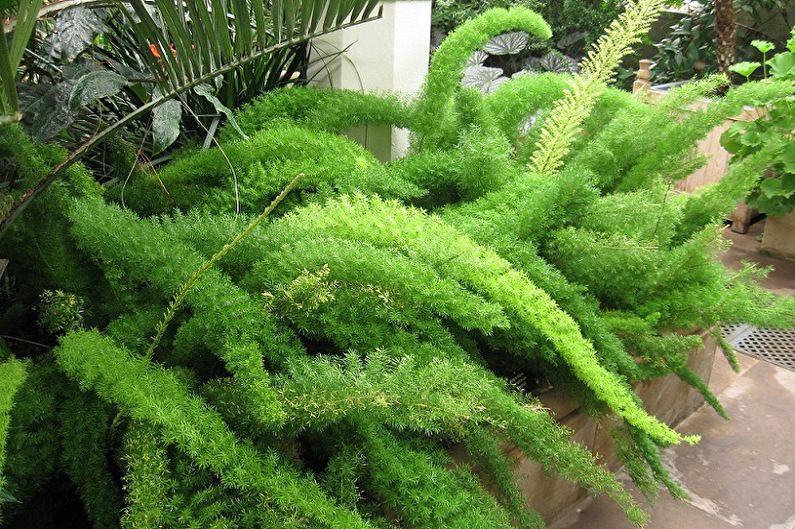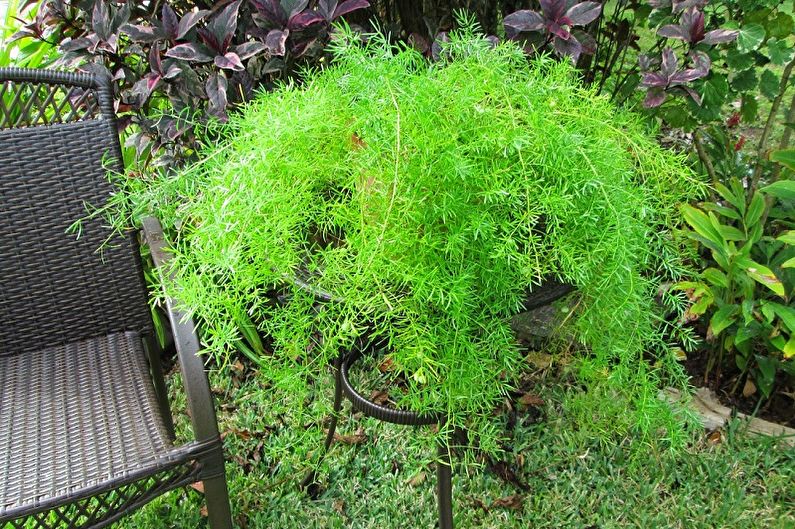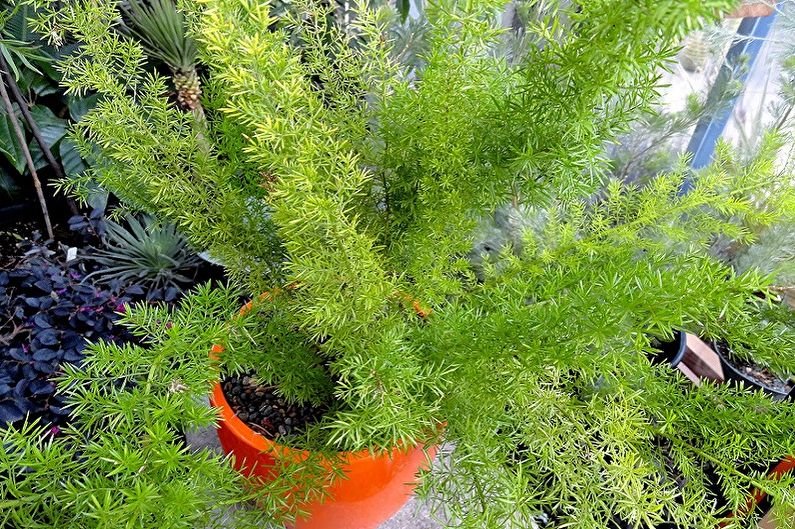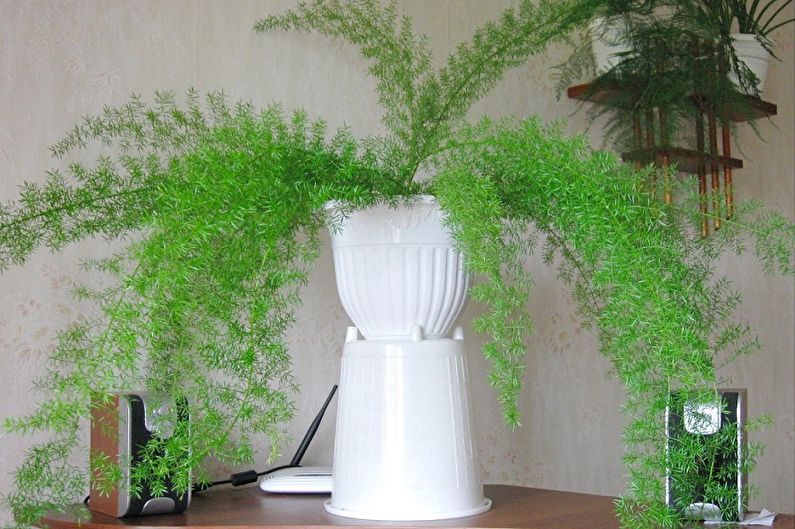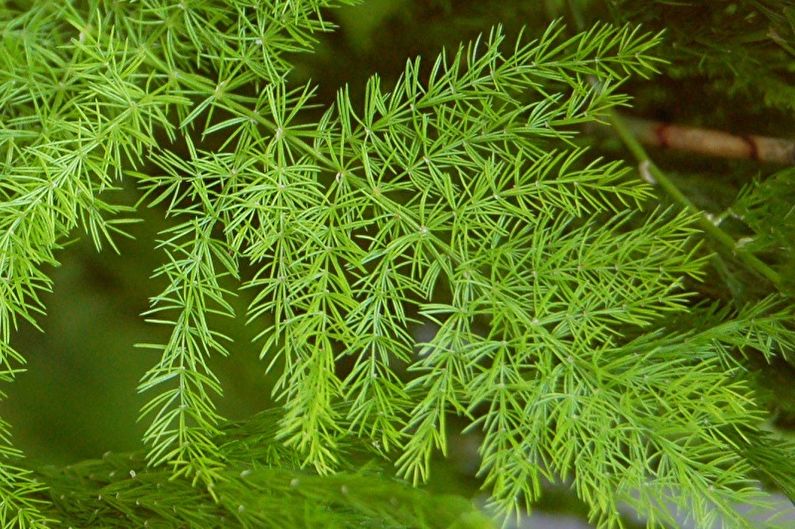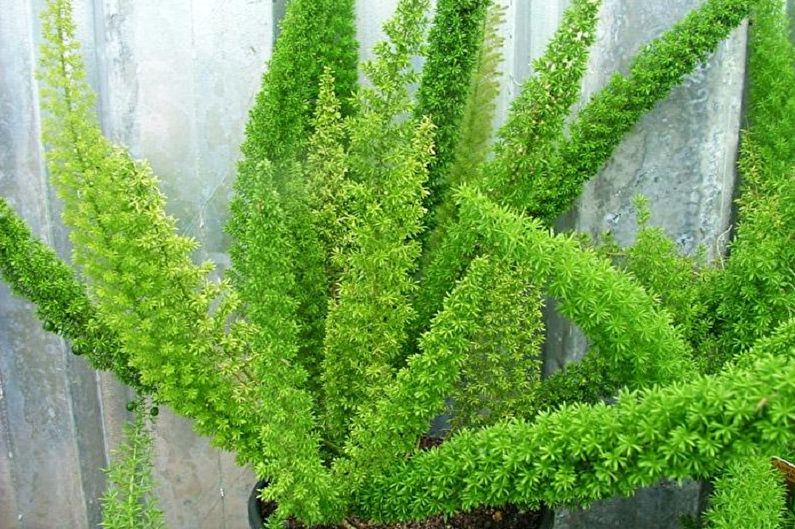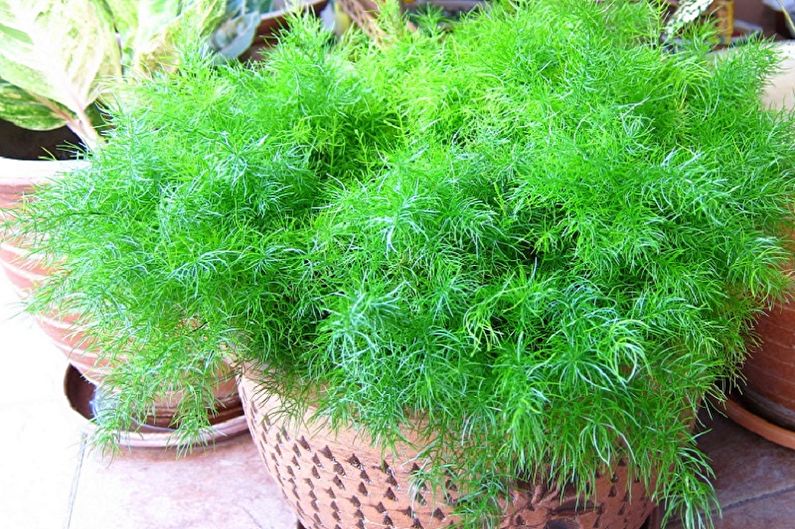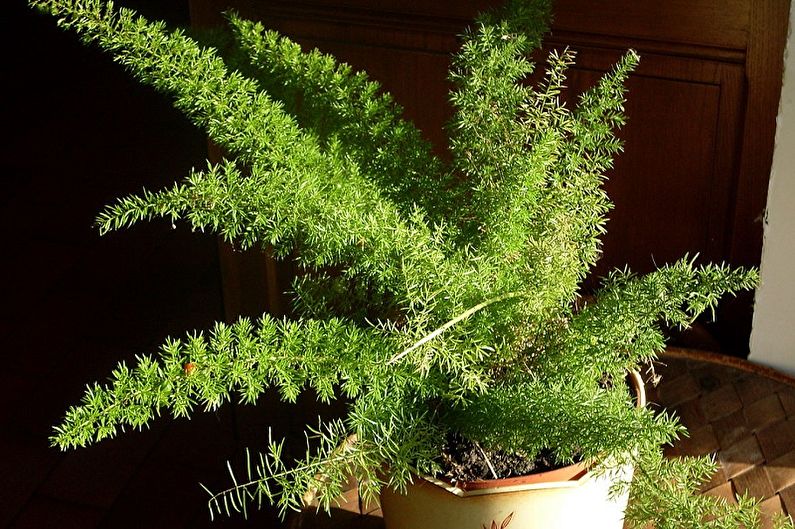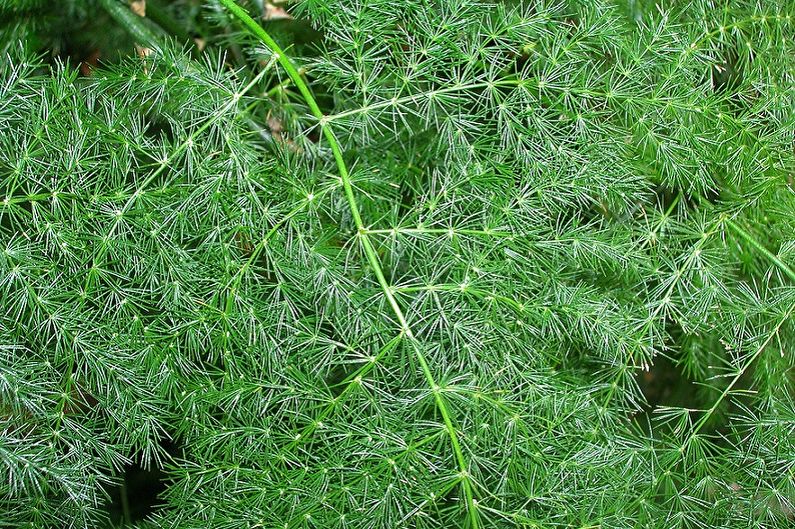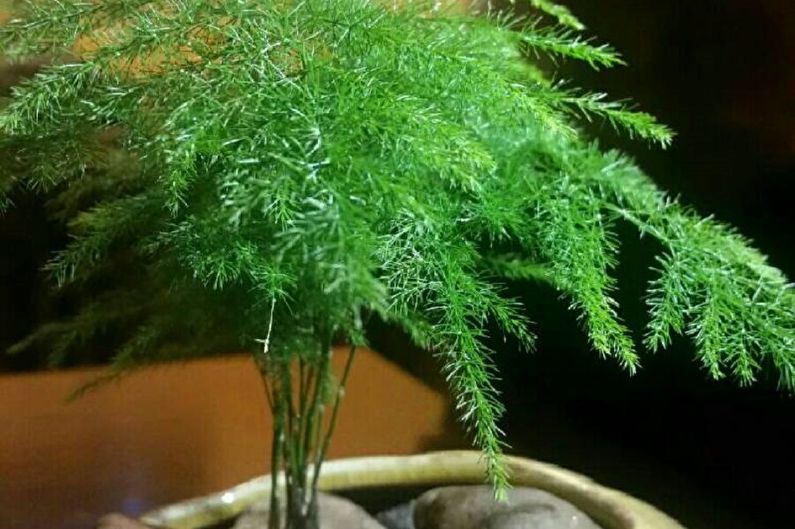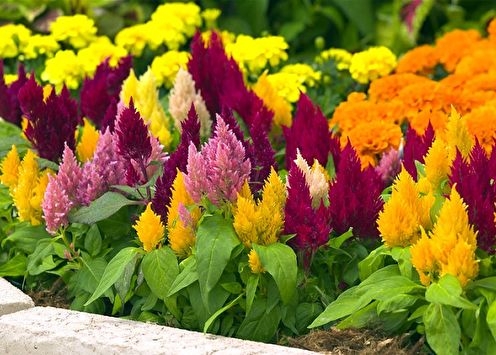
Once asparagus served as a worthy decoration of many interiors of apartments and offices. Over time, he was undeservedly forgotten and only after a few years again became the coveted representative of the flora. It is often used by florists to create winter gardens, some varieties are grown in open ground, decorating courtyards and terraces. There are edible varieties of plants, which are called asparagus and are used in different forms. All the diversity of perennials is represented by vines, shrubs and herbs. Consider how to grow such beauty at home and how to care for it!
The main types
Currently, more than two hundred species of asparagus are known for their decorative properties. This makes it possible to create excellent floral arrangements, stunning vertical phytowalls or decorate the interior with single, elegant specimens. Of the diversity, a number of perennials that are most suitable for home cultivation can be distinguished.
Cirrus asparagus
The birthplace of this plant is the tropical forests of Africa, which explains its external similarity to fern. This is a fairly branched shrub, which under natural conditions is able to bloom in small white flowers. In an apartment environment, flowering is not observed, but the stunning decorative foliage completely compensates for this drawback.
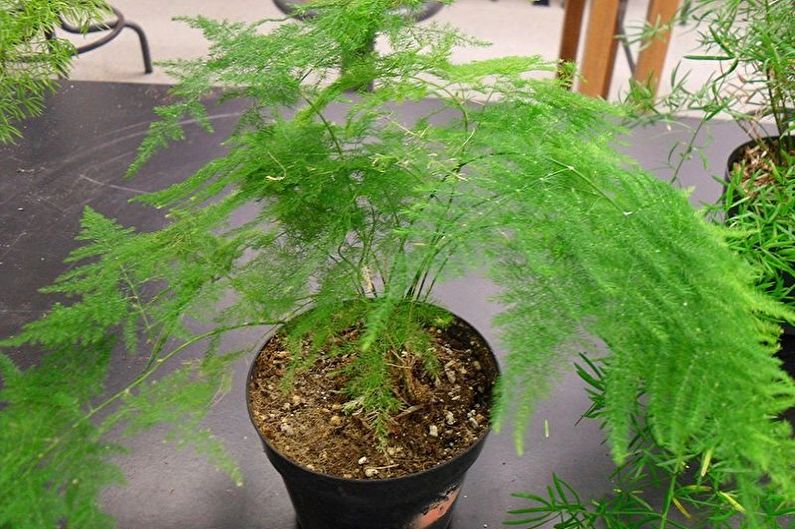
Asparagus asparagus
The stems of this North African species are capable of reaching three meters in length. This beautiful curly perennial has a number of varieties suitable for growing not only in an apartment environment, but also in open ground. In particular, the asparagus "Edible", the shoots of which are eaten both fresh and for cooking various dishes. The plant contains a large complex of vitamins and minerals.
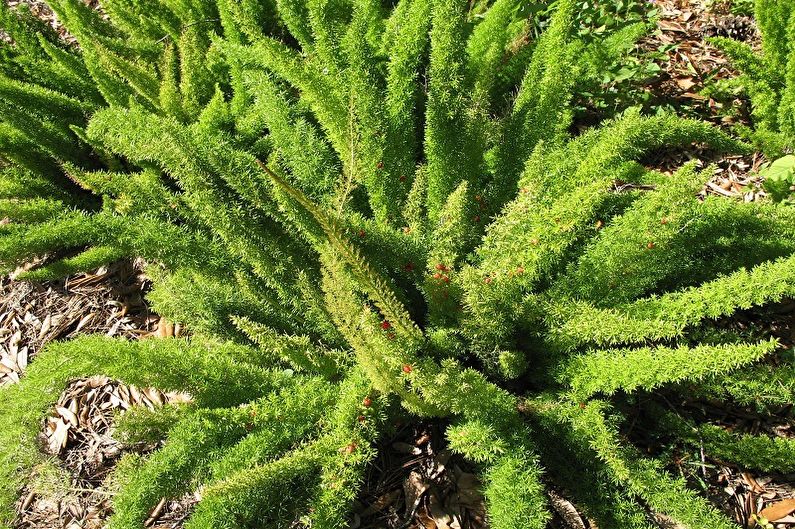
Crescent Asparagus
Perennial has lignified spiny stems, which in the natural environment of growth can reach an incredible length of up to 15 m, so this species of asparagus is classified as lianoid. At home, the length of the shoots does not exceed 4 m. This species blooms with small milk-cream flowers collected in inflorescences.
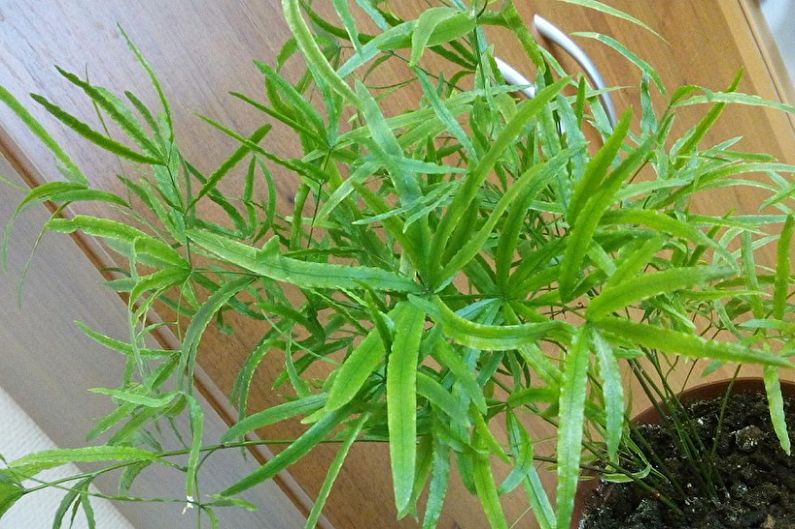
Asparagus Sprenger
This copy has the second name "Asparagus of Ethiopia" and belongs to the category of evergreen creeping perennials. It differs in wonderful fragrant flowering when blossoming white or pink small buds, as well as the presence of rounded red fruits.
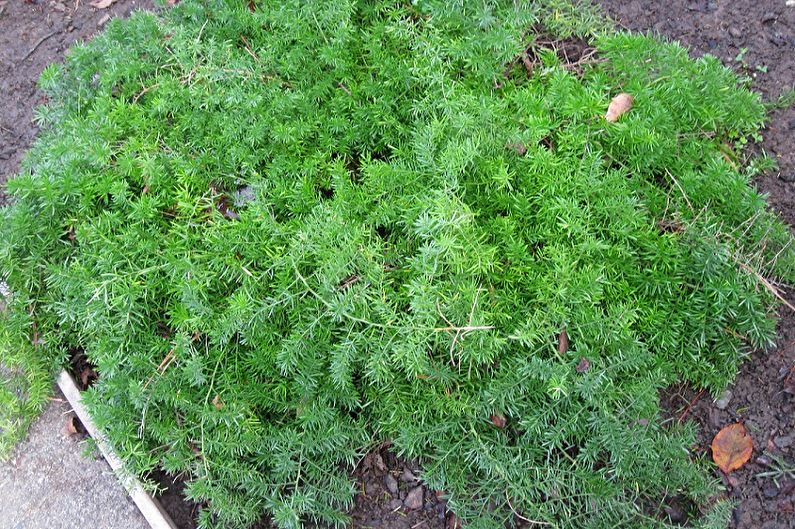
Proper Asparagus Care
This tropical plant can not be classified as particularly demanding, but care for it is necessary. To a greater extent, this applies to irrigation, since an increased or decreased level of soil moisture can lead to all kinds of diseases and death. It is also necessary to observe the temperature regime and regularly feed the culture.
Lighting
Asparagus simply needs vividly diffused lighting, without which the synthesis processes will stop. With its deficiency, yellowing of the foliage and poor growth can be observed. In this case, moving the flowerpot to the sunny side will save you without a long exposure to direct sunlight (tulle or blinds are good for protection).

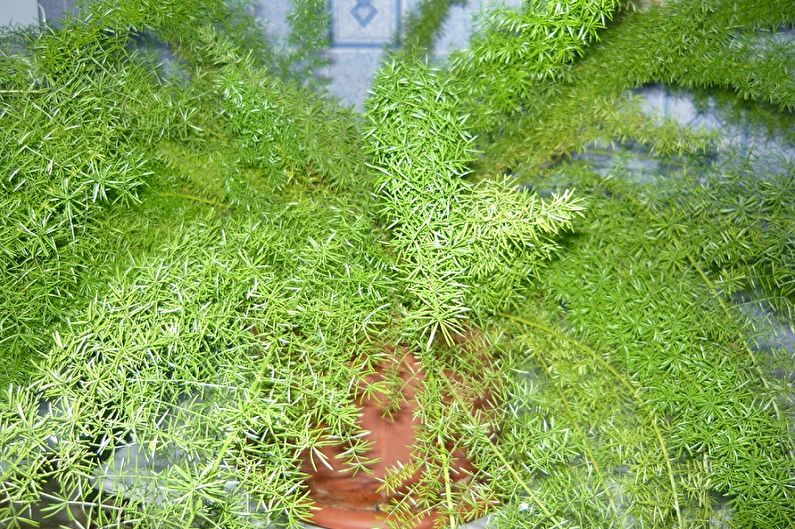
Temperature
The most acceptable temperature regime is + 18 ... + 22C. In conditions when the thermometer rises higher and the humidity is high enough, the plant may become sick, the leaves will turn yellow and crumble. In winter, asparagus can withstand temperatures up to + 6 ° ... + 8C.
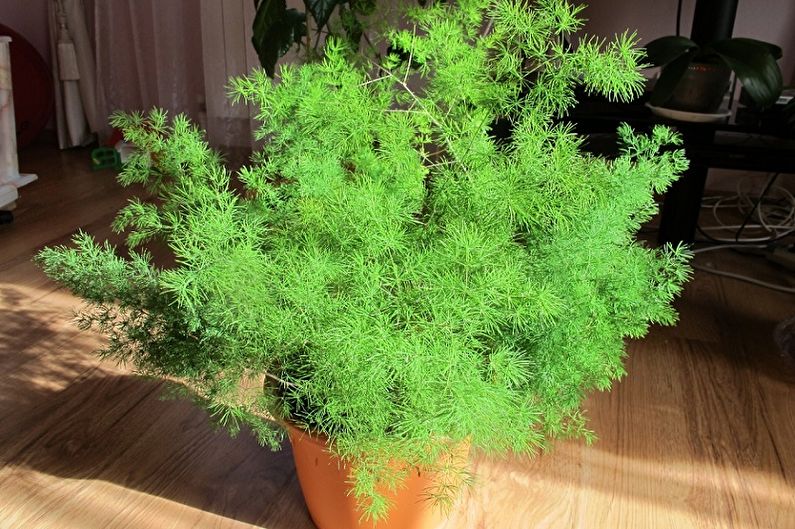
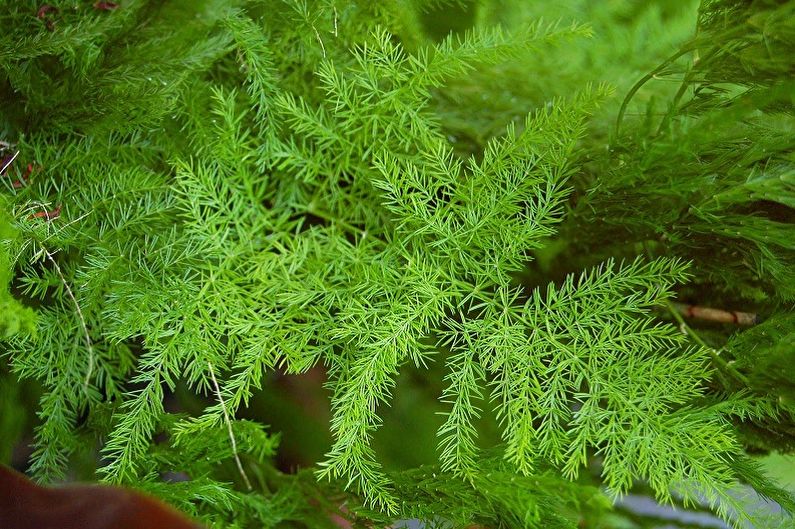
Humidity
Asparagus does not tolerate dry air, so it needs periodic spraying.In the summer, this procedure is carried out twice a day. Spray with standing water at room temperature. The water remaining in the pan after irrigation must be disposed of to prevent root rot. A favorable condition for the plant is staying in the vicinity of other cultures or even in one container, where there is an atmosphere with high humidity.
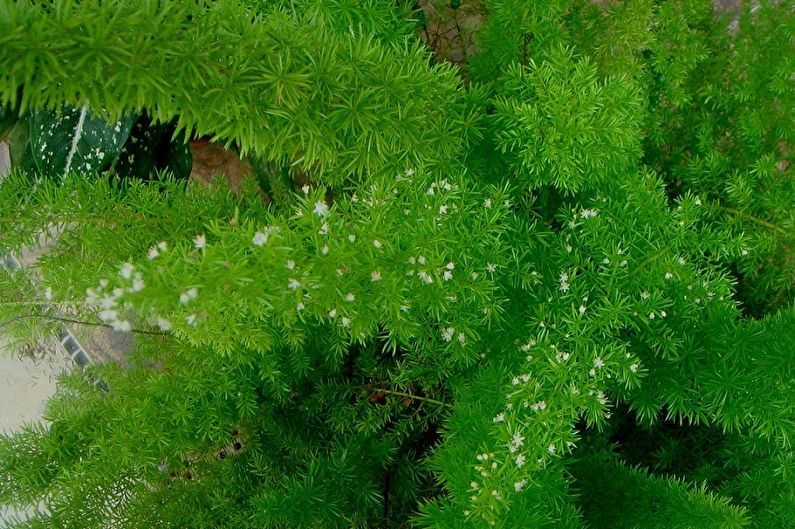
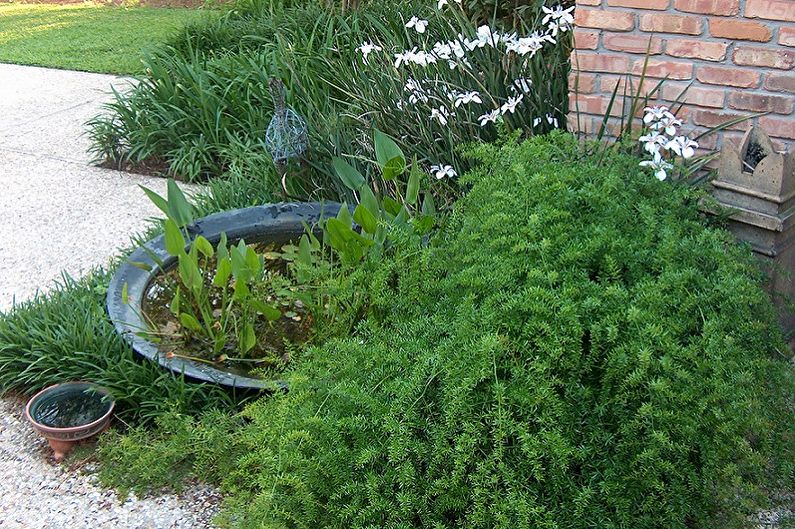
Watering
The regularity of watering depends on the time of year. In the summer, you can water a couple of times a week (with severe drought - 3 times). In winter, once a week is enough, it is necessary to ensure that the soil does not dry out. If the room is cool enough, watering can be reduced.
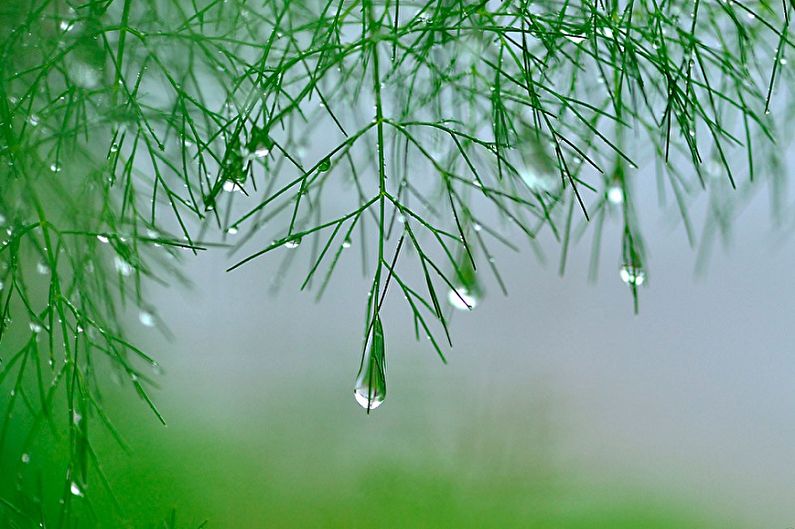
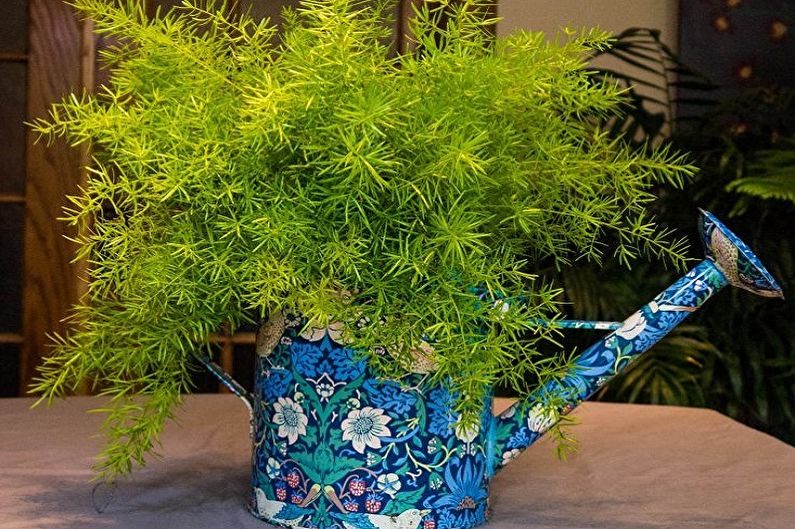
Fertilizers and fertilizing
Fertilizers are applied to the soil year-round. In the spring-summer period, asparagus needs to be fed every week, and with the onset of autumn, the frequency is doubled - fertilizers must be applied twice in 7-8 days. In winter, top dressing comes down to once a month.
As fertilizers, mineral universal compounds for indoor plants are used. Organic additives such as mullein infusion (1 tablespoon / 1 liter of water) or bird droppings (1 teaspoon / 1 liter of water) will become a real “delicacy” for asparagus. Periodic top dressing with organic matter will make the plant luxurious and improve the quality of the soil, turning it into a light, loose, breathable.
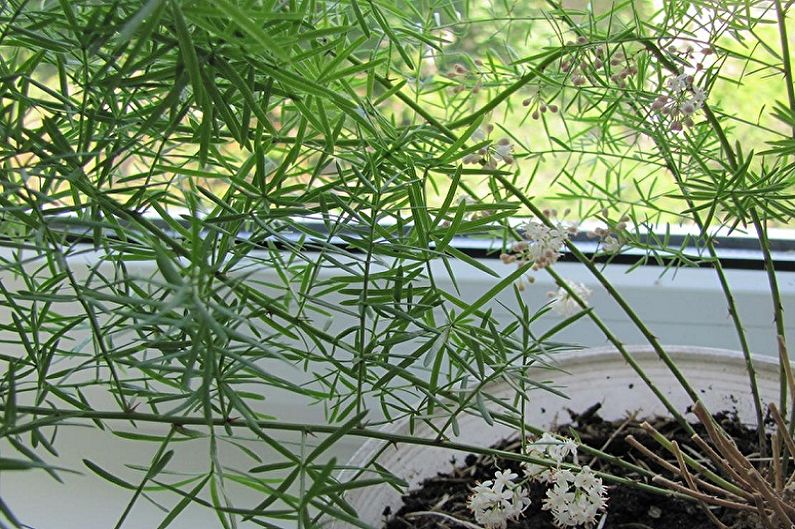
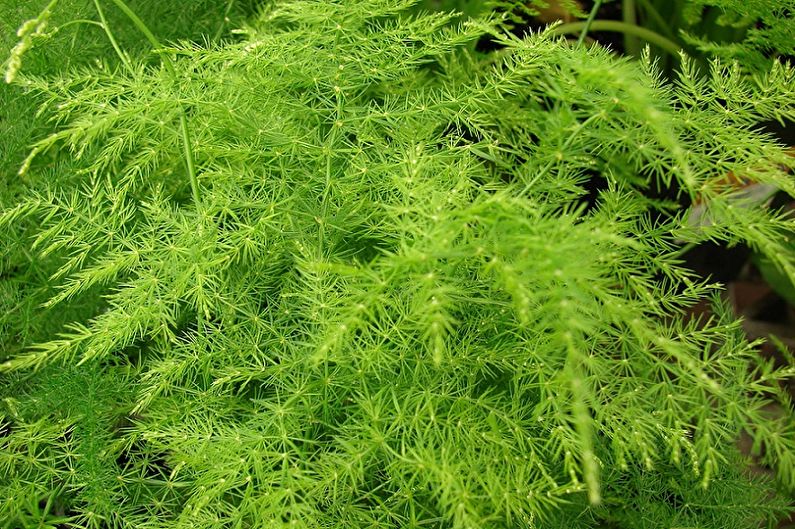
Pests and diseases
The main cause of the disease of this representative of the flora is improper care. Increased or decreased soil moisture, accompanied by a violation of the temperature regime, often lead to yellowing and falling of leaves, rotting of the root system. The way out of the situation will be the creation of a favorable microclimate.
Often, yellowing of asparagus can be observed in winter, when daylight hours are much less than in summer. In addition, heaters create too hot conditions. To avoid yellowing, it is necessary to organize additional illumination in winter with the help of fluorescent, LED or phytolamps.
Pests can also cause a lot of damage to asparagus, the most dangerous of which are spider mites and scale insects. The presence of a tick can be recognized by the appearance of yellow and brown spots, a thin web on the foliage. This insect eats the sap of the plant, as a result of which it can die. Here, chemical treatment (Fitoverm, Vermitek) will require not only this flowerpot, but also neighboring ones, since the tick easily migrates through the air.
Wax droplets of yellowish and brown color on the leaves indicate the presence of scabies, which also feeds on the plant's cellular juice. You can get rid of it by watering the soil and spraying the pot with Aktara.
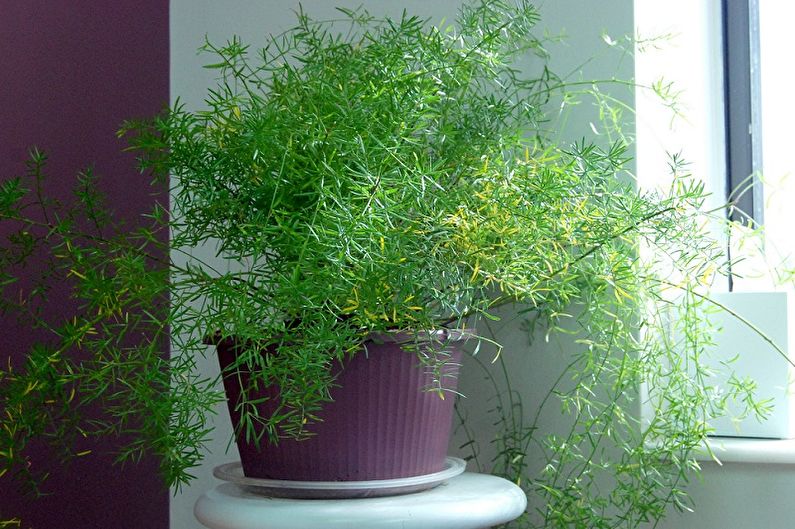
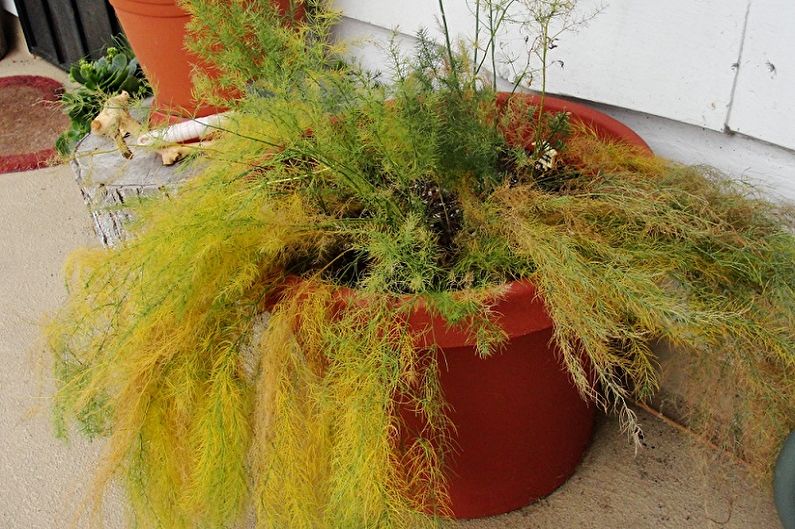
How to transplant asparagus
The rhizome of asparagus develops quite rapidly, increasing in size, so it must be transplanted annually. You need to do this in the early spring. Rhizome must be carefully removed from the pot, shake off the remaining soil, cut off old shoots and roots. It is necessary to transplant into a larger container (a tight flowerpot can burst under the pressure of a growing root).
Soil for planting can be purchased ready-made at the store or you can make the mixture yourself by combining sheet, turf soil and sand in equal proportions. At the bottom of the pot, drainage made of pebbles or expanded clay is surely laid. Having poured part of the soil, the plant needs to be planted in a pot, sprinkled with the remaining soil and watered.
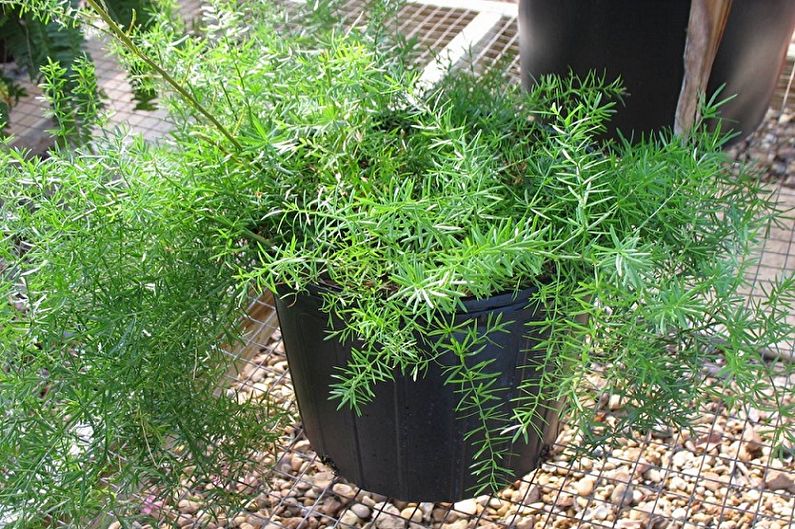
Propagation at home
There are three known methods of propagation of the crop - planting seeds for seedlings, cuttings and dividing the bush. Since flower growers have not come to a common opinion, which one is more reliable, we will consider each separately.
Propagation of asparagus seeds
Planting material can be purchased at the store or collected independently when the asparagus fades and small berries appear. Store seeds in a dry place.It is possible to sow at any time of the year, but given the fact that young sprouts will need a lot of light, it is better to carry out the procedure in the spring, saving on additional illumination. Pour soil mixed with fertilizer into a small container. To protect seedlings from pests and diseases, the soil should be thoroughly warmed up before filling, and the seeds should be treated with potassium permanganate.
Seeds of asparagus are planted in the soil at a distance of several centimeters from each other and lightly sprinkled. The container must be covered with glass or film (plastic bag) and put in a warm place with air temperature + 21 ... + 23 ° C. Regularly need to ventilate and spray the bed using standing water.
The first shoots will sprout in a month. When their height reaches about 10 cm, you can dive on small tanks. After another 3-4 months, the plants are transplanted into permanent pots filled with drainage and nutrient soil.
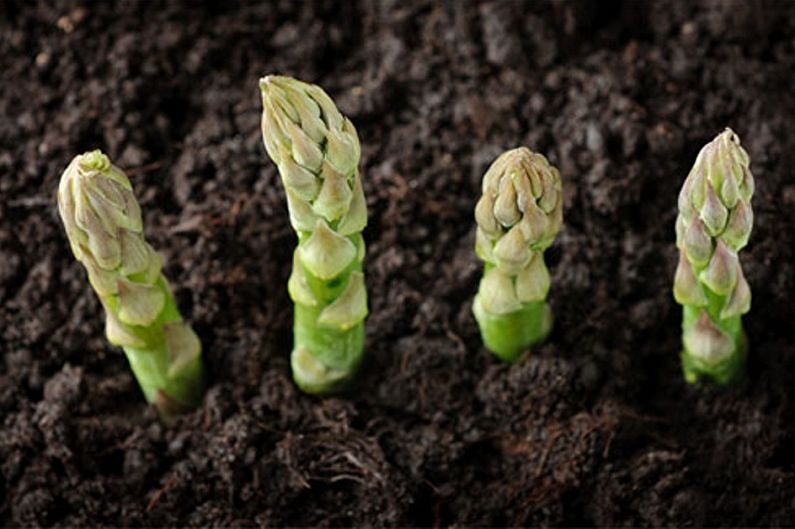
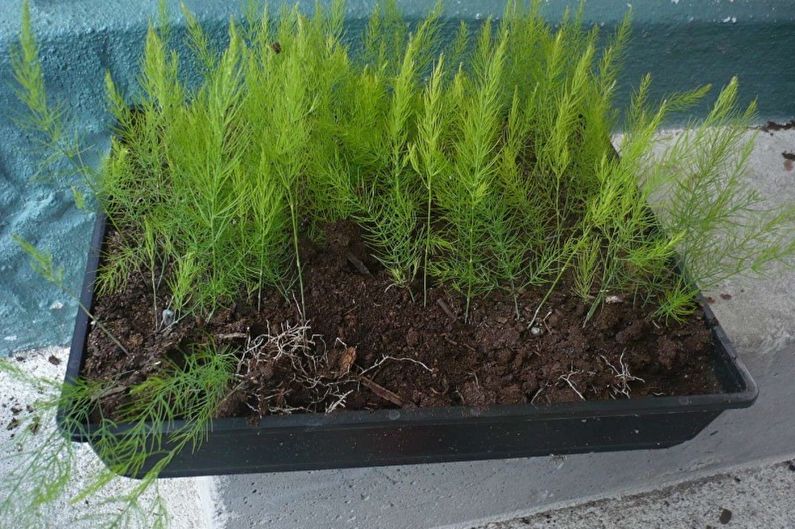
Reproduction of asparagus by division
Some gardeners consider this method the most simple. The only difficulty is to carry out the separation carefully, without injuring the rhizome. Each received bush needs to be shaken off the old soil, inspected well and, if necessary, removed damaged stems. The bunch is planted in moist soil with fertilizer. It is better to place the flowerpot for the first time in a cool (with a temperature of up to + 15C), a slightly darkened place and regularly water it. After a month, you can move it to a permanent place of residence.
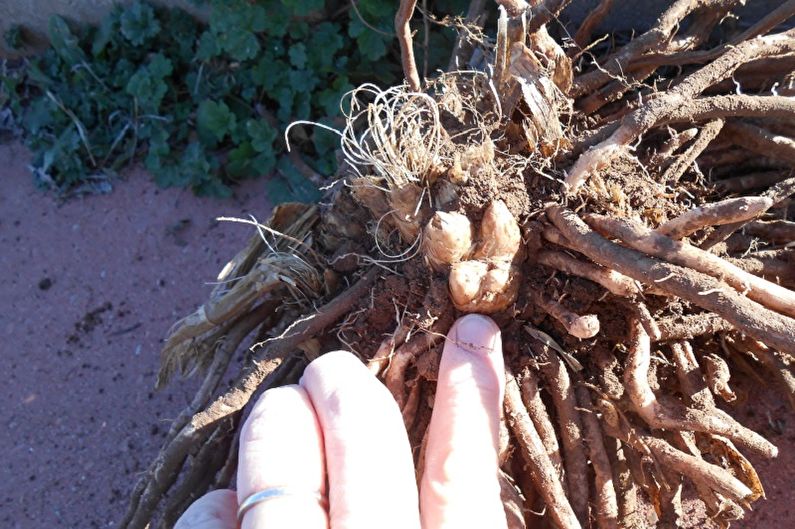
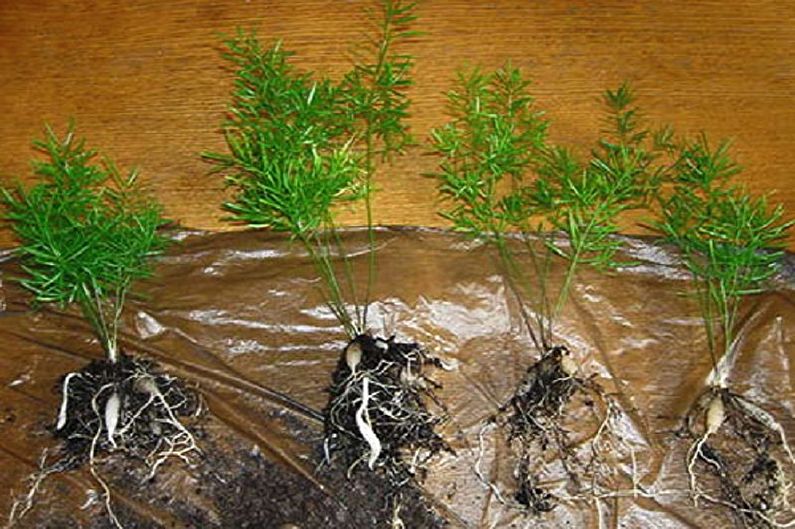
Propagation of asparagus by cuttings
This method is considered the most difficult, since planting material does not always take root. In fact, from the cuttings you can also get a new plant, if you follow some rules, namely:
1) When cutting material, use an exceptionally sharp knife, since, working with scissors, you can squeeze the place of the cut, and the handle will begin to rot;
2) Cut last year's shoots with a length of not more than 15 cm, leaving a few leaves on them;
3) Treat the roots with a growth stimulator.
A suitable time for preparing the material is from July to February. It is also important to choose the right soil, which should include peat, wet sand and perlite. Cuttings are best planted in plastic cups (you can observe the development of the root) or small pots. Planted processes are dug up and covered with a package to create greenhouse conditions. Next, it is necessary to ventilate and spray the landing daily. A month later, when the roots appear, the plant is transplanted into a constant capacity.
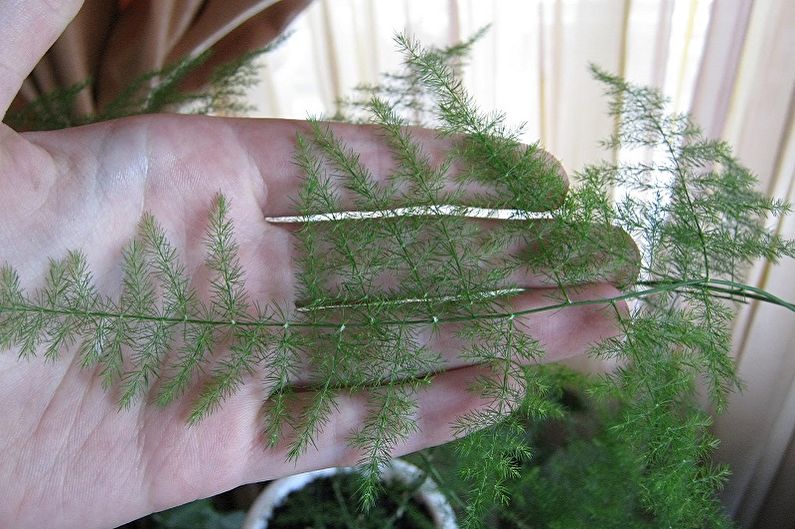
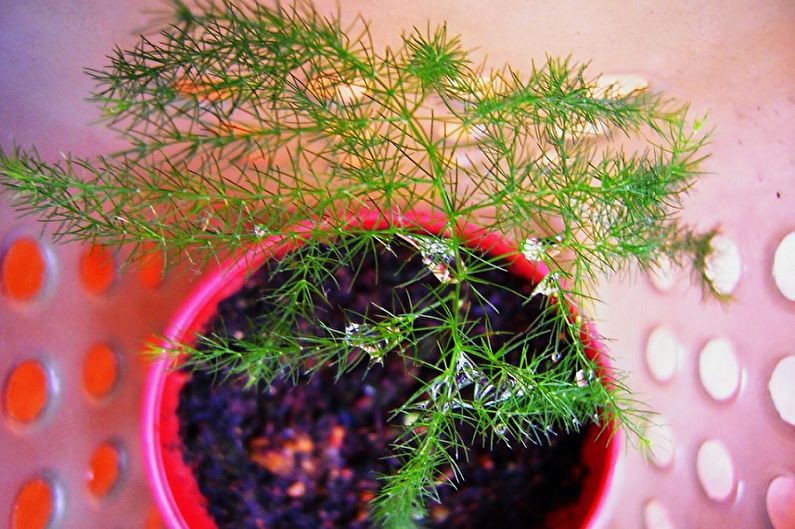
Asparagus - photo
The excellent decorative characteristics of asparagus, giving it the appearance of light lace, allow you to adequately decorate any interior. The plant is perfect for placement in apartments, terraces, balconies, design of cascading and vertical compositions, as well as the preparation of flower bouquets. You can visually familiarize yourself with a wide variety of species, evaluate their beauty and elegance in the pictures presented in the photo gallery of the article. Enjoy watching!
